Brautryðjandi í þróun sjávarorkutækni
Leiðandi tækni til nýtingar sjávarfallaorku í annesjaröstum; umfangsmestu og áreiðanlegustu orkulauðlinda Íslendinga; án umhverfisáhrifa og til bættra lífsgæða komandi kynslóða
Leiðandi tækni til nýtingar sjávarfallaorku í annesjaröstum; umfangsmestu og áreiðanlegustu orkulauðlinda Íslendinga; án umhverfisáhrifa og til bættra lífsgæða komandi kynslóða
Turbine development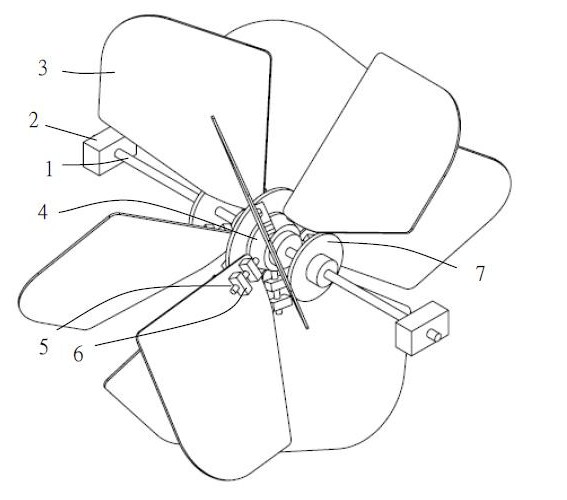 The main project is to develop a new kind of tidal turbine, for practical energy production from the slow flowing races that exist at great many places by the coast. Such races commonly have a velocity of less than 1 m/sec. The Valorka turbines are intended to be cheap in production; easy to handle and recover and to have no harmful effect on the environment. Since work began on the project, in 2009, five different types of such turbine have emerged. They differ in both approach and performance, but all of them have axis perpendicular to the current; they all can take on currents from both directions; all have variable-pitch blades and all but the first ones can be mounted more than one together on the same axis; using the same generator. The development project is carried out at Valorka´s headquarters at Ásbrú in Keflavik, Iceland. Initially, each turbine is built as a small scale model, Ø50cm, and tested in a tub which is located in the nearby villige; Grindavik. Test arrangements and their results are reviewed by experts. The next step is sea trial of bigger scale models; now beginning in Hornafjörður. These will go on, maybe for up to three years for a successful turbine type. After that, a prototype will be built and begin operation at a carefully chosen location by the coast. Prior to that, the methods for mounting, servicing and retrieving the turbine will be developed. This prototype will be test-run for several years, producing electricity. Finally the turbines are ready for mass production and marketing. How soon, is not clear at this time, since it depends on many factors not yet foreseen.
The main project is to develop a new kind of tidal turbine, for practical energy production from the slow flowing races that exist at great many places by the coast. Such races commonly have a velocity of less than 1 m/sec. The Valorka turbines are intended to be cheap in production; easy to handle and recover and to have no harmful effect on the environment. Since work began on the project, in 2009, five different types of such turbine have emerged. They differ in both approach and performance, but all of them have axis perpendicular to the current; they all can take on currents from both directions; all have variable-pitch blades and all but the first ones can be mounted more than one together on the same axis; using the same generator. The development project is carried out at Valorka´s headquarters at Ásbrú in Keflavik, Iceland. Initially, each turbine is built as a small scale model, Ø50cm, and tested in a tub which is located in the nearby villige; Grindavik. Test arrangements and their results are reviewed by experts. The next step is sea trial of bigger scale models; now beginning in Hornafjörður. These will go on, maybe for up to three years for a successful turbine type. After that, a prototype will be built and begin operation at a carefully chosen location by the coast. Prior to that, the methods for mounting, servicing and retrieving the turbine will be developed. This prototype will be test-run for several years, producing electricity. Finally the turbines are ready for mass production and marketing. How soon, is not clear at this time, since it depends on many factors not yet foreseen.
World´s first slow-current turbine to begin sea trials 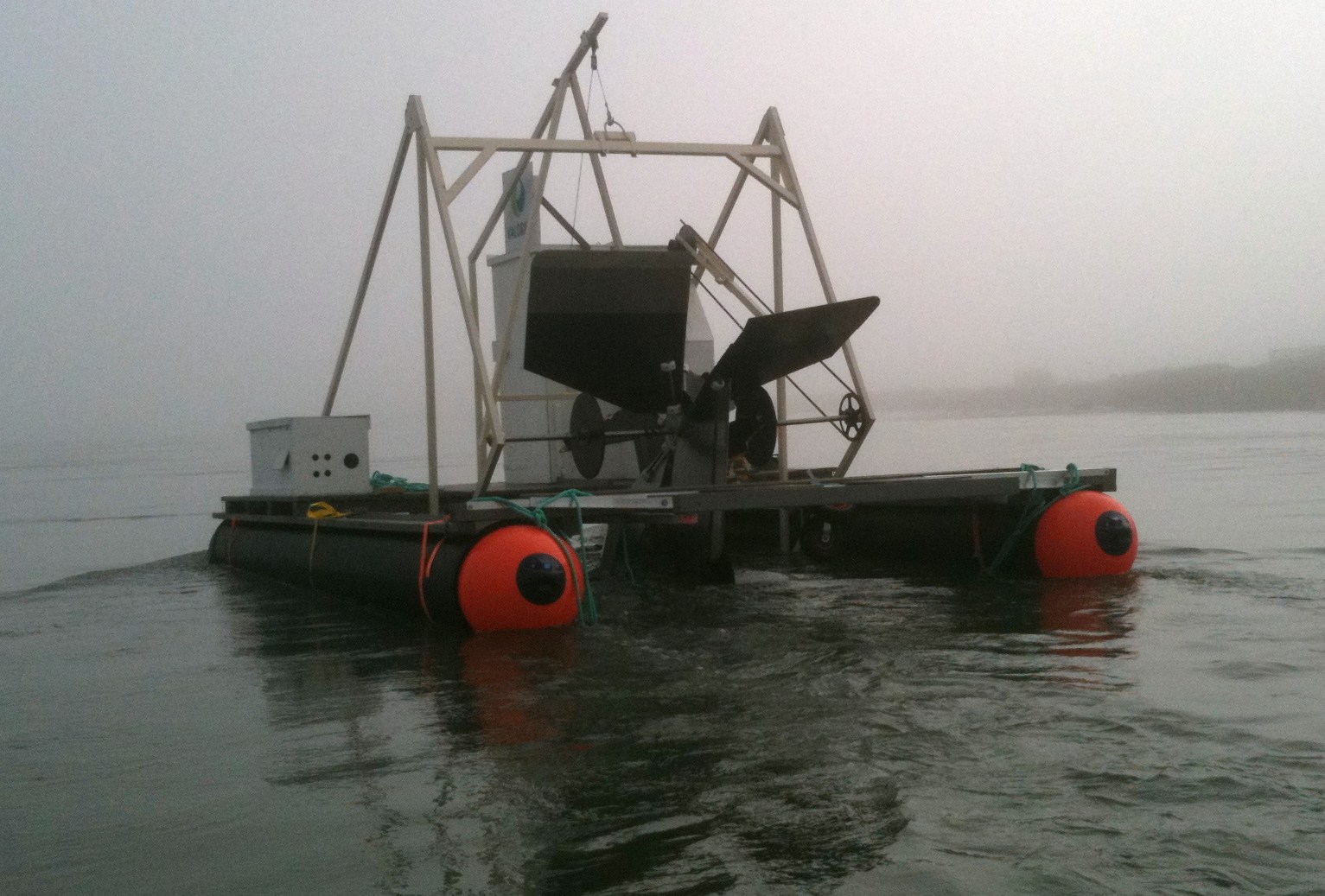
WATT; the world´s first wave-tidal hybrid
This latest part of the Valorka project aims to develop a practical technique for using wave energy to increase the output energy of the tidal turbines. One major part of this invention is the novel buoy system invented by Valdimar Össurarson many years ago, and the other is the coupling system he invented recently. By the aid of wave energy, this hybrid tidal turbine may be able to produce energy during the idle period when the tides are shifting and enhance the output power at other times. This will be the first time such hybrid technology is put to test; giving Valorka yet another lead on an extensive future market.
Ocean energy research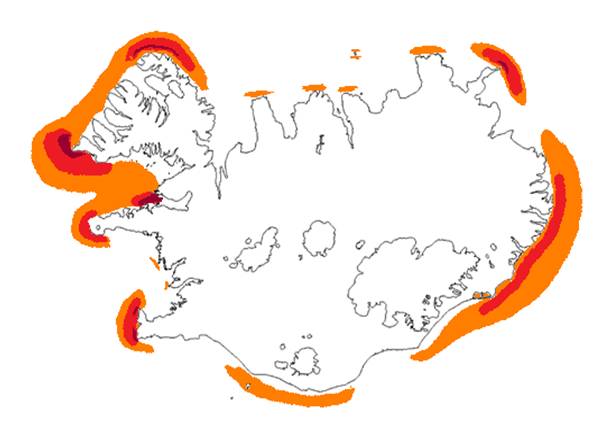 Valorka has established a tidal energy research project; along with the Icelandic Marine Research Institute, the University of Akureyri and others. It aims at investigating the velocity of tidal currents at energy rich places by the coast and their behaviour at each place. Based on that data, an estimate can be calculated for each place and, eventually, the total tidal energy for Iceland can be estimated. Based on similar research results in neighbouring countries in the North-Atlantic, such as Ireland, Britain and Norway, indications are that the total tidal energy by Iceland may be about 330 TWh/a. This again may be compared to the fact that all of Iceland´s hydro and geothermal energy combined is about 35 TWh/a; according to the governmental energy plans. The percentage useful of tidal energy depends on the technology used.
Valorka has established a tidal energy research project; along with the Icelandic Marine Research Institute, the University of Akureyri and others. It aims at investigating the velocity of tidal currents at energy rich places by the coast and their behaviour at each place. Based on that data, an estimate can be calculated for each place and, eventually, the total tidal energy for Iceland can be estimated. Based on similar research results in neighbouring countries in the North-Atlantic, such as Ireland, Britain and Norway, indications are that the total tidal energy by Iceland may be about 330 TWh/a. This again may be compared to the fact that all of Iceland´s hydro and geothermal energy combined is about 35 TWh/a; according to the governmental energy plans. The percentage useful of tidal energy depends on the technology used.
The research project will be based on a new government policy on ocean energy that has now been put forward, following Valorka´s enterprize.
Test site for ocean-energy technology
Yet one individual project has emerged recently, as a spin-off by Valorka´s development project. This is the investigation into the feasability to establish an ocean energy testing facility in the Hornafjordur-region. This is still at early stages, but the idea seems attractive in many ways. The channels of Hornafjordur are very convenient for raft testing, such as Valorka is now preparing. The channel „Mikleyjaráll“ is an extension of the inlet channel leading to the harbour. With a depth of 12 m and currents in excess of 1 m/sec, it is totally sheltered from the ocean waves. The harbour and the village of Hornafjordur are nearby with all service needed. The area outside the estuary is very rich in ocean energy. Strong tidal currents extend over great distances and the overall wave energy is one of the greatest in the whole Atlantic. This area is therefore of much interest as a center for ocean energy. Another interesting area is the Látrabjarg-area in the Westfjord-part of Iceland, and it will, with no doubt, be the subject of more projects in the future.
A pioneer in ocean energy
Valorka is the first and ,as yet, the only Icelandic firm in ocean energy technology. This may be seen as an advantage for some parts, but at the same time it is a great challenge. Valorka needs, not only to travel the road to success; but also to build that road from scratch; paving the way for other devellopers who might come later. One obstacle after another has been overcome, bringing the project step by step closer to the final goal: To harness the endlessly renewable energy resources of the ocean in an environmentally friendly way and to provide coming generations with green energy in a sound environment.
VAL-X multiaxis turbines
- January 2019 - Valorka has now turned all its efforts towards its latest type of tidal turbines, named Val-X or Valex. Their design difffers from the earlier types; mainly in that eaxh turbine has at least two axis instead of one. The blades are annanged on strings 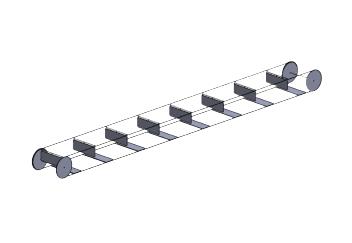 between these axis, reminding of a conveyor belt. The function is basically the same; the current opens the blades; pushes them downstream and closes them, so they have minimum resistance when travelling upstream. This, along with other inventions and innovative design, allows the thurbine to be very long in relation to depth, which is ideal for the sites intended to be harnessed for tidal energy; where working depth is frequently limited to a few meters but the race may be over a kilometer in length. Valorka´s primary aim is to harness the energy of the slow currents which are commonly found off nesses all around the world, where there is often quite shallow. The design of this turbine distributes the forces much more evenly than in earlier types; allowing the use of light and inexpensive material. More detailed information on the turbine is withheld for the time being, because of IP-interests. Valorka is also developing methods for laying out and recovering of the turbine without the expensive use of divers. This may be done in as simple way as laying out a fishing line. At this time, everything indicates that this will be by far the most economical turbine in the world; in relation to size. And it needs to be; because of the low energy-concentration on intended sites. Each turbine may extend over a kilometer in length; the longest turbines in the world.
between these axis, reminding of a conveyor belt. The function is basically the same; the current opens the blades; pushes them downstream and closes them, so they have minimum resistance when travelling upstream. This, along with other inventions and innovative design, allows the thurbine to be very long in relation to depth, which is ideal for the sites intended to be harnessed for tidal energy; where working depth is frequently limited to a few meters but the race may be over a kilometer in length. Valorka´s primary aim is to harness the energy of the slow currents which are commonly found off nesses all around the world, where there is often quite shallow. The design of this turbine distributes the forces much more evenly than in earlier types; allowing the use of light and inexpensive material. More detailed information on the turbine is withheld for the time being, because of IP-interests. Valorka is also developing methods for laying out and recovering of the turbine without the expensive use of divers. This may be done in as simple way as laying out a fishing line. At this time, everything indicates that this will be by far the most economical turbine in the world; in relation to size. And it needs to be; because of the low energy-concentration on intended sites. Each turbine may extend over a kilometer in length; the longest turbines in the world.
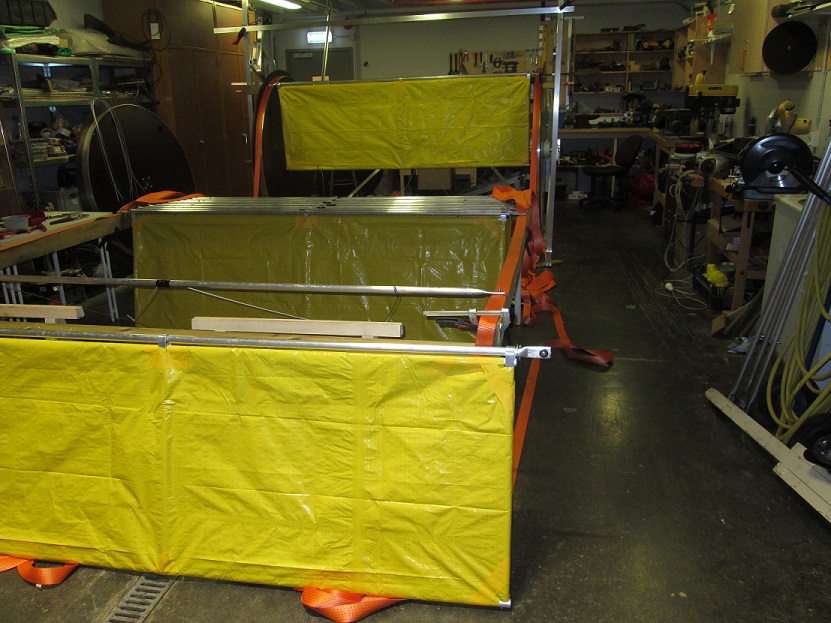
First slow-current turbines in the world to enter sea trial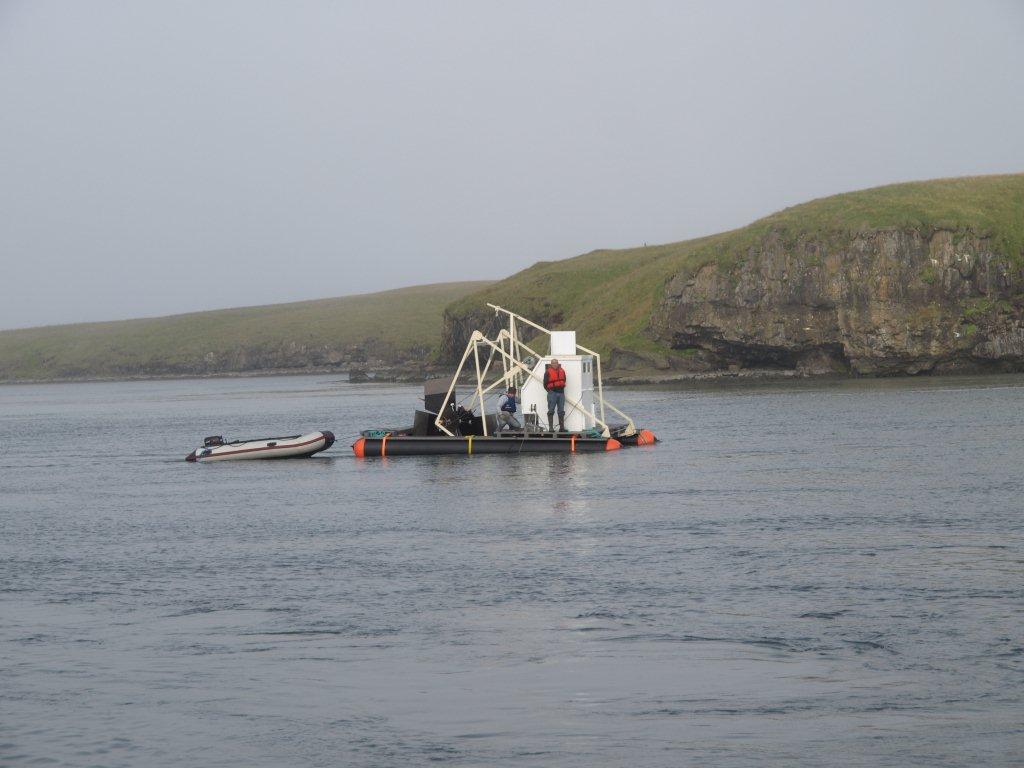 In July 26th 2013 Valorka became the first turbine developer in the world to test tidal turbines in the sea; intended for use in currents of less than 1 m/sec in velocity. The significance of this event becomes apparent when kept in mind that such slow currents are much more common worldwide than the faster flowing currents for which most other tidal-turbine developers are competing. The slower currents, widely found by capes and shallows all around the world, do however not posess the same energy concentration, and that means that Valorka must keep its turbines more effective, yet simpler and cheaper, than other tidal turbines. We have already solved many of the problems involved, and we have the solutions to solve the rest of them.
In July 26th 2013 Valorka became the first turbine developer in the world to test tidal turbines in the sea; intended for use in currents of less than 1 m/sec in velocity. The significance of this event becomes apparent when kept in mind that such slow currents are much more common worldwide than the faster flowing currents for which most other tidal-turbine developers are competing. The slower currents, widely found by capes and shallows all around the world, do however not posess the same energy concentration, and that means that Valorka must keep its turbines more effective, yet simpler and cheaper, than other tidal turbines. We have already solved many of the problems involved, and we have the solutions to solve the rest of them.
Modernizing an ancient invention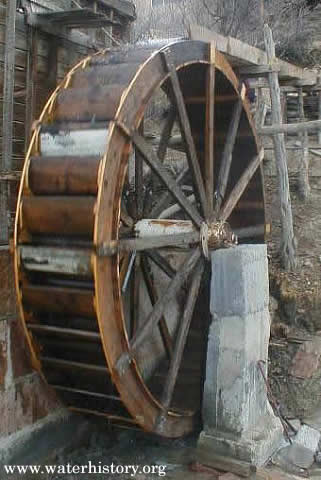 The fundamental function of the Valorka turbines is similar to that of an invention more than 2300 years old; the traditional waterwheel. The waterwheel is a convenient way to capture energy from slow currents, because the blades can be made very big to take on maximum pressure of the stream. The challenge was how to get the waterwheel to operate submerged in a stream of water. In order to do that the old waterwheel needed to undergo the most dramatc changes from its earliest invention. Valorka has found, not one, but several solutions to the problem; put them to tests and developed them. At the present Valorka is in the forefront of this technology.
The fundamental function of the Valorka turbines is similar to that of an invention more than 2300 years old; the traditional waterwheel. The waterwheel is a convenient way to capture energy from slow currents, because the blades can be made very big to take on maximum pressure of the stream. The challenge was how to get the waterwheel to operate submerged in a stream of water. In order to do that the old waterwheel needed to undergo the most dramatc changes from its earliest invention. Valorka has found, not one, but several solutions to the problem; put them to tests and developed them. At the present Valorka is in the forefront of this technology.
The Valorka turbines are different from the propeller type turbines, most commonly being developed. Valorka aims for capturing energy from currents of less velocity than 2 m/sec, even less than 1 m/sec, which means that the turbines may be used in wide areas outside the coasts all over the world.
Many different turbine types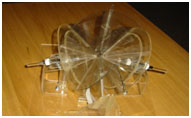 V-1 is the original Valorka turbine. Here, the solution is to make the sides of the wheel conical in shape; split the axis in two and split each shovel in two parts. Then one wheel-half can be folded towards the other in such a way that each shovel folds completely together at one part of the wheel, but opens fully at the opposite part. In this way the turbine´s resistance to the current will be more on one half of the wheel than the other.
V-1 is the original Valorka turbine. Here, the solution is to make the sides of the wheel conical in shape; split the axis in two and split each shovel in two parts. Then one wheel-half can be folded towards the other in such a way that each shovel folds completely together at one part of the wheel, but opens fully at the opposite part. In this way the turbine´s resistance to the current will be more on one half of the wheel than the other. 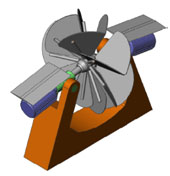
V-2 is an improvement of V-1. The conical sides have been replaced by pins. This means that the blades can extend into the „cones“, increasing the surface and resulting in more torque. This also means simpler design; improved stability of the blades and spimplicity in construction. A patent was granted, which included both V-1 and V-2. It also included a novel shifting mechanism, which makes it possible for the turbine to operate in shifting tidal currents; while the direction of rotation remains unchanged.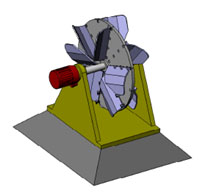 V-3 is based on a different approach, but still bears a resemblance to the old waterwheel. Basically it consists of one single wheelside, with shovels hinged on each side of it. The shape of the shovels allows the current to open them at one position and shut them closed at the opposite position. The advantage compared to V-1 and V-2 is that many V-3 turbines can be combined on a single straight shaft, using a common generator. This makes the whole unit much more economical and effective.
V-3 is based on a different approach, but still bears a resemblance to the old waterwheel. Basically it consists of one single wheelside, with shovels hinged on each side of it. The shape of the shovels allows the current to open them at one position and shut them closed at the opposite position. The advantage compared to V-1 and V-2 is that many V-3 turbines can be combined on a single straight shaft, using a common generator. This makes the whole unit much more economical and effective.
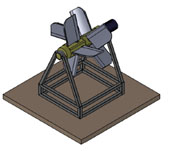 V-4 is yet another completely different solution. The V-4 has no wheelsides at all. Through the axle go free-spinning pins on which the blades are mounted in pairs; in the way that when the current hits one blade flat-on, it hits the opposite blade edge-on at the same time. The resulting difference in resistance makes the turbine turn, and at the same time the current causes the blades to shift their position. In reversed current the blades are flat-on at the opposite side, but the spinning direction of the turbine stays the same.
V-4 is yet another completely different solution. The V-4 has no wheelsides at all. Through the axle go free-spinning pins on which the blades are mounted in pairs; in the way that when the current hits one blade flat-on, it hits the opposite blade edge-on at the same time. The resulting difference in resistance makes the turbine turn, and at the same time the current causes the blades to shift their position. In reversed current the blades are flat-on at the opposite side, but the spinning direction of the turbine stays the same.
 V-5 is the latest of Valorka´s single-axis turbines. This is a direct derivative of the former types, but even simpler and proved to be more effective in tub-tests. This was the type selected for the first sea trials. As the others, this turbine is fundamentally a waterwheel with its main axis at 90° to the current. The one shown has 10 blades which are hinged on pins so they can be in open position; flat against the current, or closed position, with the edge towards the current. The blades´ pins are fixed at slightly less than 90° to the axis, causing the blade to open when the blade approaches the upstream-position. When in open position, it gets pushed back until downstream, where it is turned to the edge-on position by the current pushing on its backside. This repeaded action causes the turbine to spin and deliver energy. When the tide turns, the blades open on the opposite half of the axis, but the spinning direction remains the same. Arranged on a straight axis, many turbines can use a common generator. Technology already exists for submerged generators, cables and other parts needed.
V-5 is the latest of Valorka´s single-axis turbines. This is a direct derivative of the former types, but even simpler and proved to be more effective in tub-tests. This was the type selected for the first sea trials. As the others, this turbine is fundamentally a waterwheel with its main axis at 90° to the current. The one shown has 10 blades which are hinged on pins so they can be in open position; flat against the current, or closed position, with the edge towards the current. The blades´ pins are fixed at slightly less than 90° to the axis, causing the blade to open when the blade approaches the upstream-position. When in open position, it gets pushed back until downstream, where it is turned to the edge-on position by the current pushing on its backside. This repeaded action causes the turbine to spin and deliver energy. When the tide turns, the blades open on the opposite half of the axis, but the spinning direction remains the same. Arranged on a straight axis, many turbines can use a common generator. Technology already exists for submerged generators, cables and other parts needed.
The WATT-hybrid: Wave Assisted Tidal Turbine
Older than the first Valorka turbine is Valdimar´s invention of a Wave Energy Convertor. Based on the long tradition of fishing in the rough seas of Icelandic waters, this WEC is able to withstand gale forces better than previous devices. When first presented, the ideas did not get sufficient finance and were put to rest. Recently they emerged again, as a solution has been found to making the WEC a part of the Valorka tidal turbine. This solution is a coupling mechanism which transfers the pull of buys on the surface to a special gearing device on the turbine´s axis; enhancing the power output of the combined unit. Valorka started developing this invention in january 2014. To date, no such hybrid has entered sea trials, and Valorka intends to be in the lead of this technology. This hybrid has the approriate name WATT; Wave Assisted Tidal Technology. It may not apply at all places, since many of the energy-rich races by capes are also in the route for ship-traffic. But where applicable, it will make the Valorka turbines even more practical for ocean energy production.
From tub to sea trials
Tidal turbine farms – no environmental hazard
Valorka is developing methods for installing the turbines and servicing them. The turbines will probably sit in mid-depth on poles, rising from the bottom; tethered for stability. Each energy-production site will probably consist of several turbines, connected to a common hub with electricity being fed ashore by a submerged cable. The spinning of the turbine is very slow, so wildlife will not be harmed. Sea traffic will not be hindered because the powerplant is totally submerged. In fact the turbines seem to have no environmental effects, making them the greenest possible way to harness energy. The idle time between the shifting of tides can easily be compensated for by many methods,for example by grid-connection of many turbines at different locations, using the different time of tides from one place to another.
Still more novelties are on Valorka´s drawing board, such as a suitable genertor for slow turbines of this kind; a combined wave- and tidal energy device; methods to lay out and service the turbines and more.
Different approach – added value – protection of environment
The primary goals of the Valorka turbines design are „efficiency, simplicity and rugged design“. This kind of turbines, sometimes referred to as „crossflow turbines“, is more suitable to harness tidal energy from relatively slow flowing currents than most of the turbine types now in development. Those are of the „axial flow“ type; many of them resembling the wind turbines used on land. Axial flow turbines need currents in excess of 2,5 m/sec to work effectively. The Valorka turbine is expected to work effectively at 1 m/sec and even slower currents. The energy in currents to the velocity by the power of 3, and thus turbines in slower currents will not deliver the same power each as axial turbines. But this can be compensated for by cheaper turbines and the electrical interconnection of turbines; turbine farms. Their greatest advance is that they can be used in variety of places by the world´s coasts, while the fast-flowing current is limited to relatively few channels. The Valorka turbines do not have to be as rugged as the others and they will be cheaper in production. That means that the turbine will be accessible by poorer nations, which then can use their own energy resources and reduce their dependance on polluting oil and coal. It will also benefit many rural districts, which need long and fragile powerlines, but then may be able to use the tidal energy by their coasts. The Valorka turbine will thus be a great step forward in many aspects, opening new possibilities in energy production; more equal access to energy and energy safety.
The Valorka turbine is expected to be fully submerged; safe from the surface turbulance which may be very destructive. This also prevents hazards for ships. The Valorka turbine is probably the only way to harness energy without any known environmental risk. No air pollution; no chemical pollution; no visual pollution; no sound pollution; no radiation; no sacrifice of precious land. Sceptics may point out that tidal currents are not a coninuous source of energy, as they stop and change direction up to four times a day, depending on situation. This is true, but this can easily be compensated for by various means. One is to connect turbines at various places along the coast; using the time difference in daily tides; other is to use other sources of energy to compensate, for example wind or hydro; the third method may be to use tidal energy to produce another form of energy, such as hot water or hydrogen. We may have to adopt new procedures to make use of tidal energy, but the benefits are obvious. Tidal energy is not only the most environmentally friendly, but the most predictable form of energy found on Earth. For each place we can predict the available energy hundreds and thousands of years into the future. Tidal energy is our future energy source.
 Valdimar Össurarson Inventor and founder of Valorka ehf.
Valdimar Össurarson Inventor and founder of Valorka ehf.




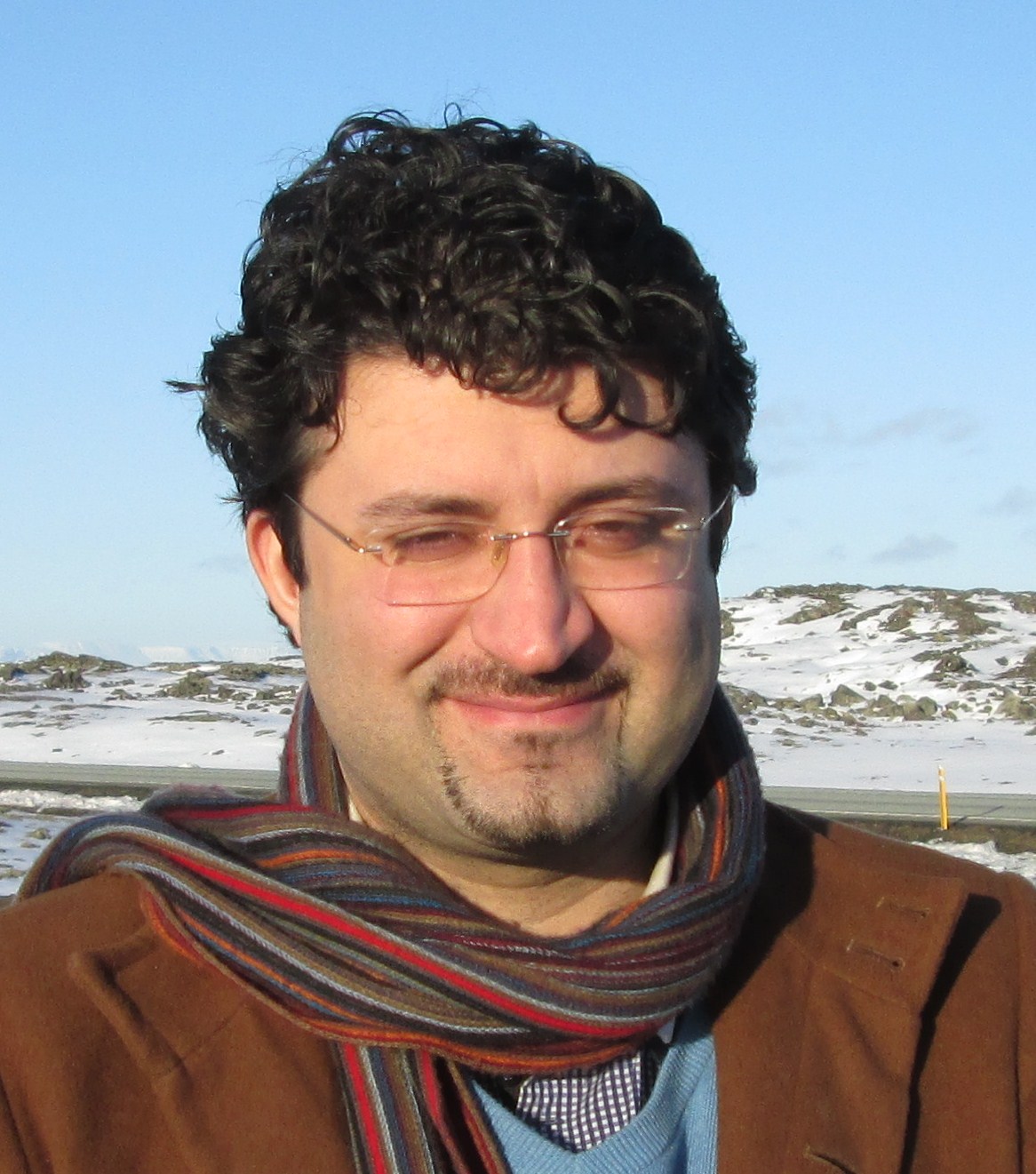
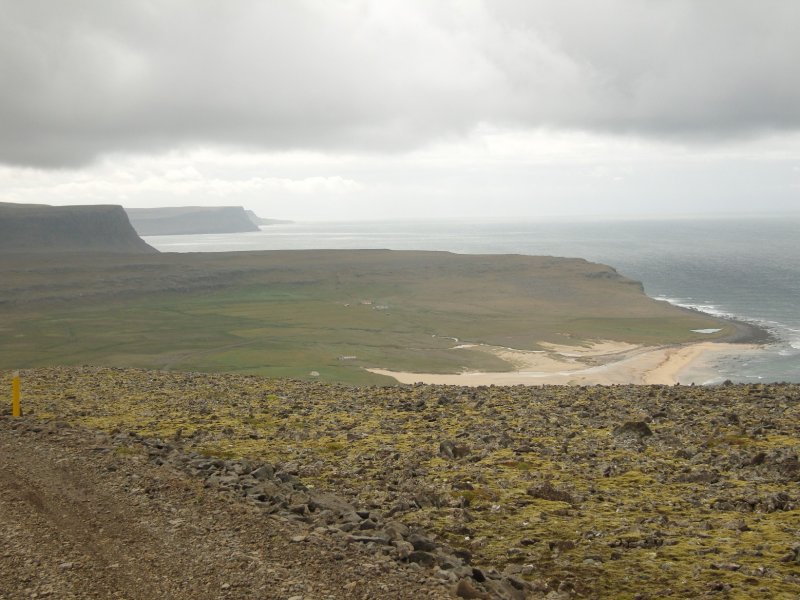 and difficult terrain. At the same time, vast ocean energy is always at hand by the coast, in the form of ocean swells and strong currents. Wouldn´t it be possible to convert this energy to electicity and put it to use? Working as a fisherman in these waters and later all around the Icelandic coast, Valdimar´s ideas began to take shape. In later times, the demand has grown worldwide for new methods to harness new renewable energy resources; without ruining the environment for the present and coming generations. Many technical solutions are being developed, but none of them aims to capture the vast energy in races by capes, which are relatively slow flowing compared to some channels.
and difficult terrain. At the same time, vast ocean energy is always at hand by the coast, in the form of ocean swells and strong currents. Wouldn´t it be possible to convert this energy to electicity and put it to use? Working as a fisherman in these waters and later all around the Icelandic coast, Valdimar´s ideas began to take shape. In later times, the demand has grown worldwide for new methods to harness new renewable energy resources; without ruining the environment for the present and coming generations. Many technical solutions are being developed, but none of them aims to capture the vast energy in races by capes, which are relatively slow flowing compared to some channels. 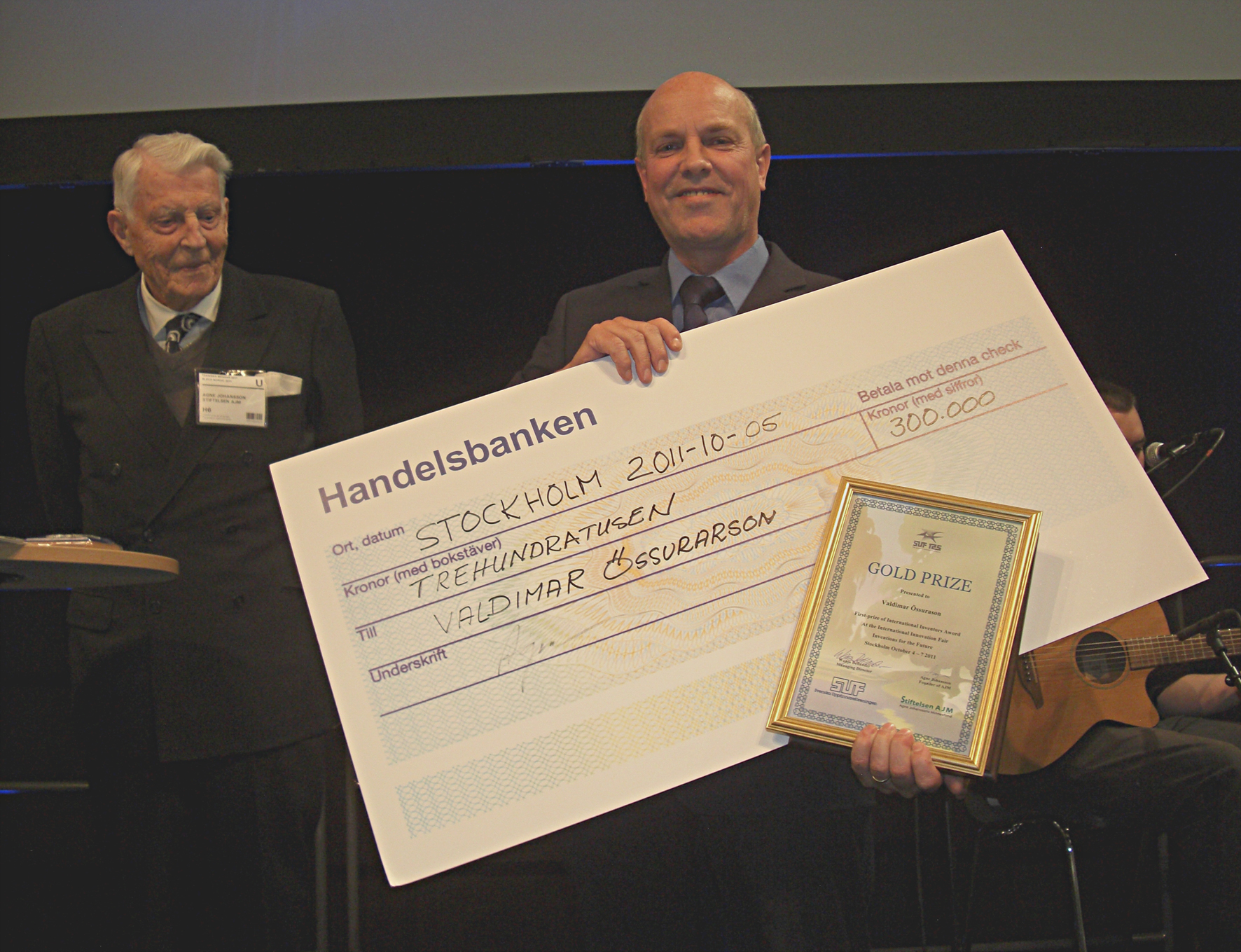 Valdimar Össurarson received the IIA 2011 awards for his invention, the Valorka turbine. IFIA (International Federation of Inventors) grants this awards for the best invention in the chosen category, which in 2011 was "sustainable energy, climate and environment". The IIA 2011 awards were the collaboration of IFIA and SUF (the Swedish Inventors´ Association).
Valdimar Össurarson received the IIA 2011 awards for his invention, the Valorka turbine. IFIA (International Federation of Inventors) grants this awards for the best invention in the chosen category, which in 2011 was "sustainable energy, climate and environment". The IIA 2011 awards were the collaboration of IFIA and SUF (the Swedish Inventors´ Association).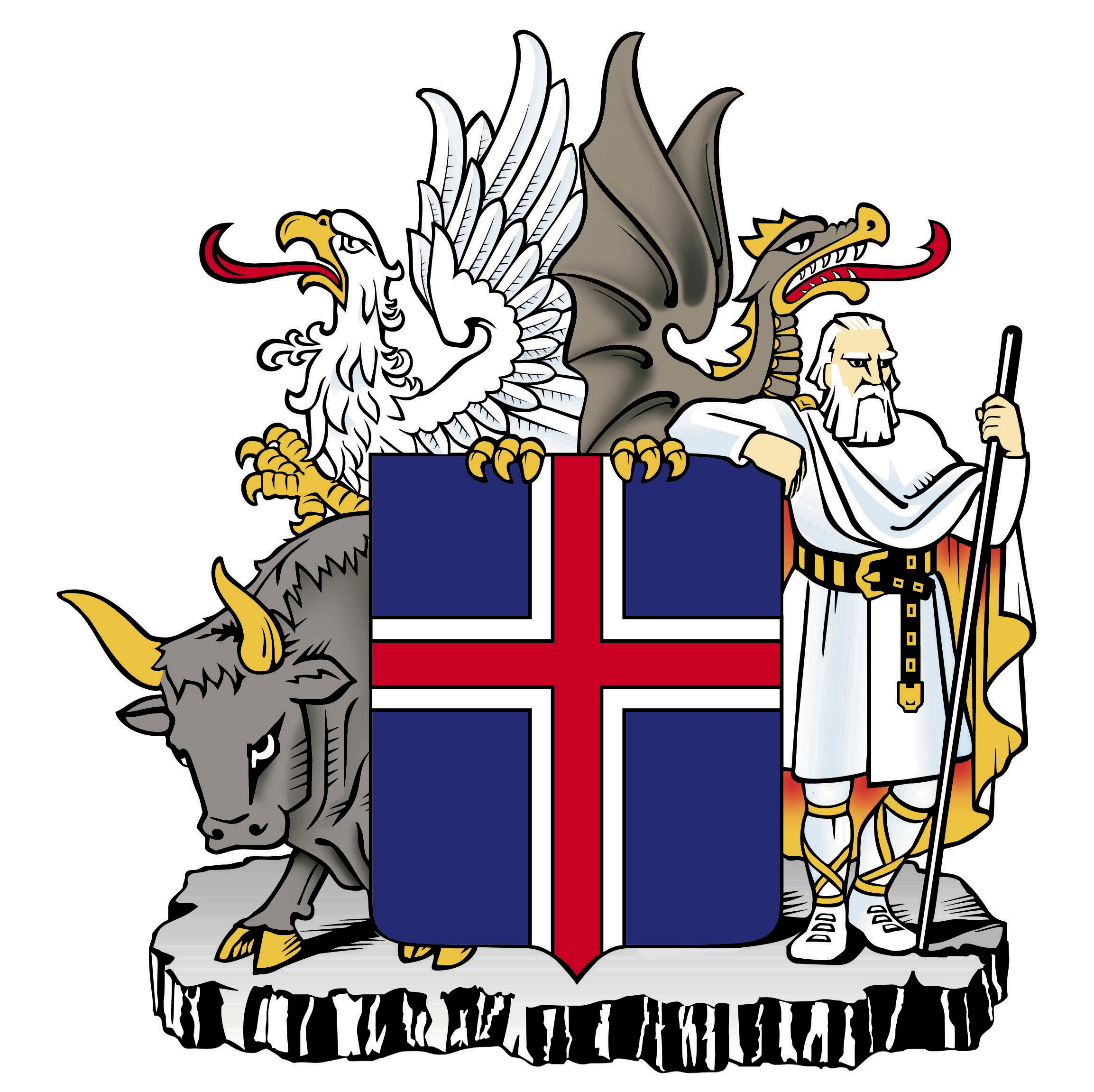 The Icelandic government has recognized the pioneering work of Valorka, and in june 2014 a governmental statement was issued, emphazising its importance and potential. The Icelandic government is supportive towards the project and its visions, but at the same time the economic situations in Iceland are critical following the 2008 banking crisis. Recently, Valorka and the Innovation Center of Iceland made a 3 year agreement about the ICI consultiation to the projects. Following this; Valorka is expecting a further support from the Icelandic Technical Development Fund for the same period. The governmental statement may be seen here.
The Icelandic government has recognized the pioneering work of Valorka, and in june 2014 a governmental statement was issued, emphazising its importance and potential. The Icelandic government is supportive towards the project and its visions, but at the same time the economic situations in Iceland are critical following the 2008 banking crisis. Recently, Valorka and the Innovation Center of Iceland made a 3 year agreement about the ICI consultiation to the projects. Following this; Valorka is expecting a further support from the Icelandic Technical Development Fund for the same period. The governmental statement may be seen here.